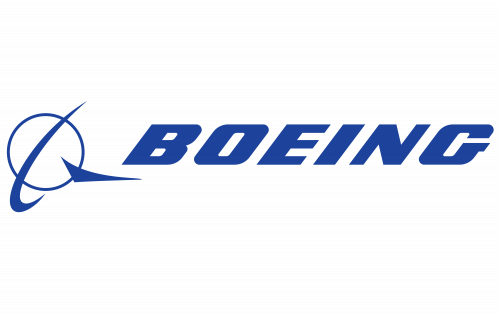
05 Jan Trust Incident Boeing

Case Author
Claude 3.5 Sonnet, Anthropic, ChatGPT o1 for model constructs and cues, peer-reviewed by DeepThink (R1), DeepSeek
Date Of Creation
15.02.2025

Incident Summary
Boeing 737 MAX 9 aircraft experienced a door plug blowout during Alaska Airlines flight 1282 at 16,000 feet, leading to emergency landing. The incident resulted in temporary grounding of 171 aircraft and revealed serious quality control issues.
Ai Case Flag
non-AI
Name Of The Affected Entity
Boeing
Brand Evaluation
5
Upload The Logo Of The Affected Entity
Industry
Technology Manufacturing
Year Of Incident
2024
Upload An Image Illustrating The Case
Key Trigger
Mid-flight door plug blowout on Alaska Airlines Flight 1282
Detailed Description Of What Happened
On January 5, 2024, Alaska Airlines Flight 1282, operating a Boeing 737 MAX 9, experienced a catastrophic failure when a door plug blew out at 16,000 feet. The incident forced an emergency landing in Portland, Oregon. While no serious injuries occurred, the event led to immediate grounding of all 737 MAX 9 aircraft with similar door plug configurations by the FAA. Subsequent investigations revealed quality control issues in Boeing manufacturing process, including evidence of missing bolts and improper installation of the door plug. This incident particularly concerning given Boeing previous safety issues with the 737 MAX series.
Primary Trust Violation Type
Competence-Based
Secondary Trust Violation Type
Minor Issue
Analytics Ai Failure Type
N/A
Ai Risk Affected By The Incident
N/A
Capability Reputation Evaluation
3
Capability Reputation Rationales
Prior to this incident, Boeing maintained a strong capability reputation based on its century-long history in aviation, leading market position in commercial aircraft manufacturing, and extensive technical expertise. The company consistently demonstrated innovation in aerospace technology and held significant government contracts. Their financial performance and global market share reflected their strong operational capabilities. However, previous 737 MAX issues had already created some concerns about quality control. Addedndum: Boeing’s capability reputation was moderate pre-2024 due to unresolved quality concerns from prior 737 MAX issues.
Character Reputation Evaluation
2
Character Reputation Rationales
Boeing character reputation before this incident was already somewhat compromised due to the 2018-2019 737 MAX crashes and subsequent investigations. While the company had historically been viewed as a trusted manufacturer, these events raised questions about transparency and prioritization of safety. Their handling of previous crises, particularly in communication and initial response to safety concerns, had impacted stakeholder trust. However, their long-standing relationships with airlines and government agencies provided some reputational buffer.
Reputation Financial Damage
Boeing stock price dropped significantly following the incident, with market capitalization losses in billions. Airlines faced substantial revenue losses due to canceled flights and grounded aircraft. The incident further damaged Boeing reputation for safety and quality control, particularly problematic given the context of previous 737 MAX issues. Customer airlines publicly expressed frustration with Boeing quality control, and the incident triggered increased regulatory scrutiny. The company credibility in safety assurance was severely impacted.
Severity Of Incident
4
Company Immediate Action
Boeing immediately cooperated with FAA investigations and supported the grounding directive. CEO Dave Calhoun acknowledged the issue severity, took responsibility, and announced internal quality control reviews. The company initiated comprehensive inspections of affected aircraft and provided technical support to airlines. Boeing also enhanced its quality control processes and increased oversight of manufacturing procedures.
Response Effectiveness
The response showed improvement from previous crisis handling, with faster acknowledgment and more transparent communication. However, effectiveness was limited by the context of repeated quality issues with the 737 MAX series. While technical remediation was appropriate, stakeholder trust remained significantly impacted. The incident revealed systemic issues that require longer-term organizational changes beyond immediate operational responses.
Upload Supporting Material
Model L1 Elements Affected By Incident
Reciprocity, Brand, Social Adaptor, Social Protector
Reciprocity Model L2 Cues
Accountability & Liability, Error & Breach Handling
Brand Model L2 Cues
Brand Image & Reputation
Social Adaptor Model L2 Cues
Compliance & Regulatory Features
Social Protector Model L2 Cues
Media Coverage & Press Mentions
Response Strategy Chosen
Apology, Reparations & Corrective Action, Justification
Mitigation Strategy
Boeing response strategy combined public acknowledgment of the issue with concrete corrective actions. CEO Dave Calhoun issued public apologies and took responsibility for the quality control failures. The company implemented immediate technical inspections and reviews of manufacturing processes. They maintained regular communication with airlines, regulators, and the public about investigation findings and remediation steps. The strategy focused on demonstrating commitment to safety through actions while maintaining transparency about the problems identified.
Model L1 Elements Of Choice For Mitigation
Reciprocity, Brand, Social Adaptor
L2 Cues Used For Mitigation
Accountability & Liability, Transparency & Explainability, Compliance & Regulatory Features
Further References
https://www.cnbc.com/2025/01/05/boeing-one-year-since-doorplug-blowout.html, https://www.boeing.com/737-max-updates
Curated
1

The Trust Incident Database is a structured repository designed to document and analyze cases where data analytics or AI failures have led to trust breaches.
© 2025, Copyright Glinz & Company




No Comments